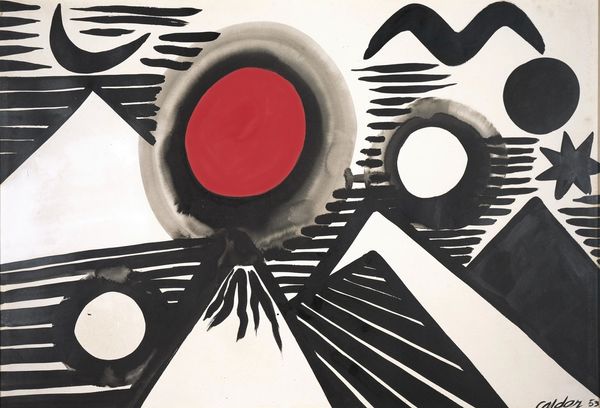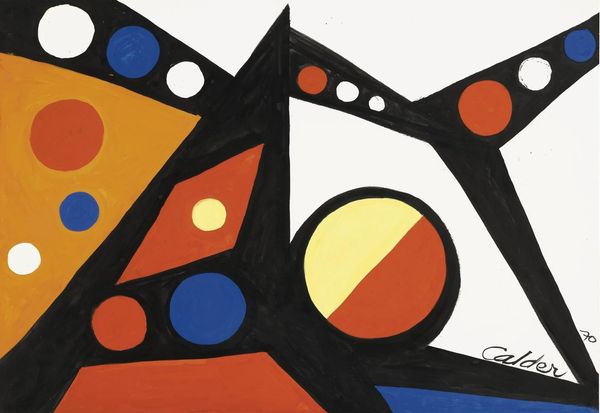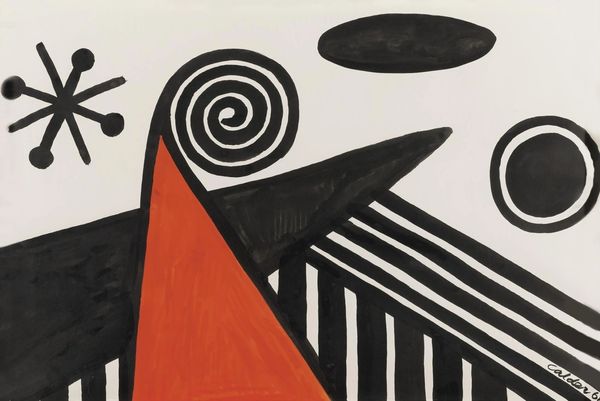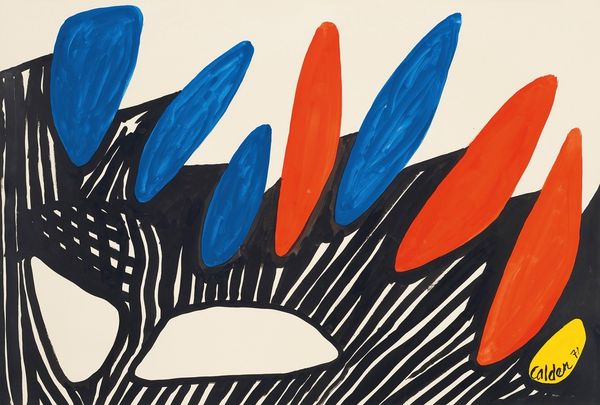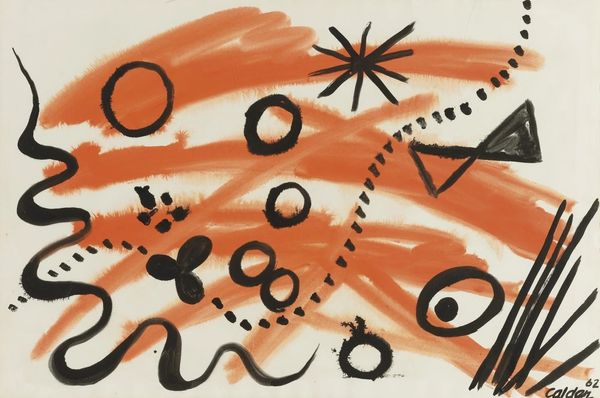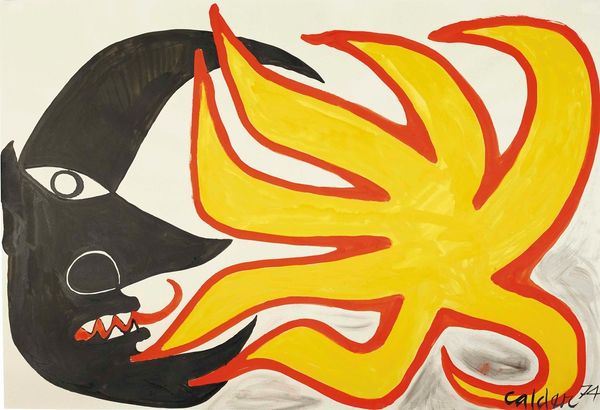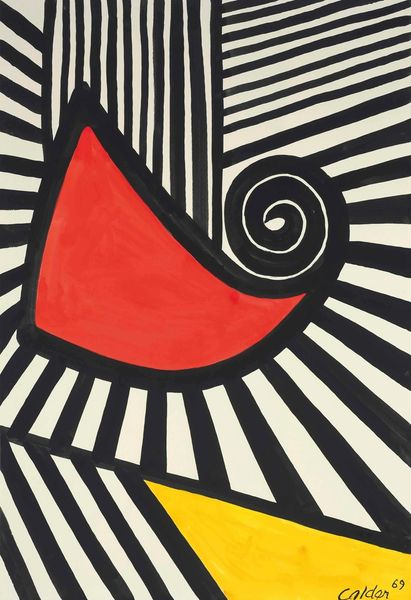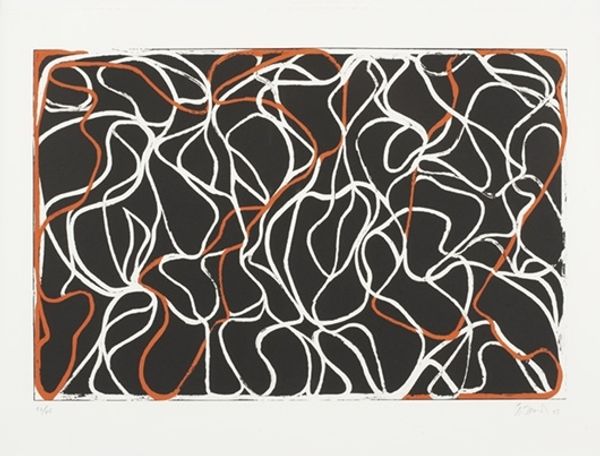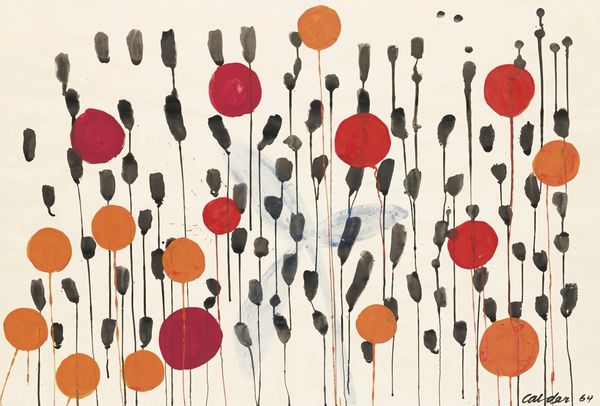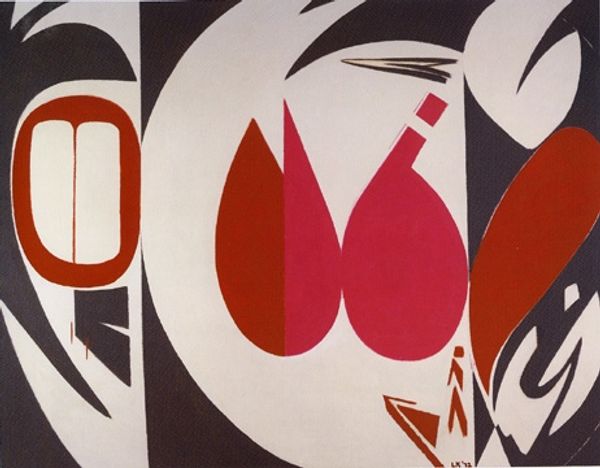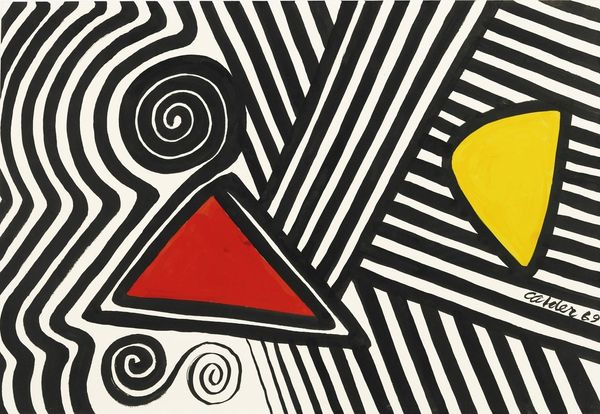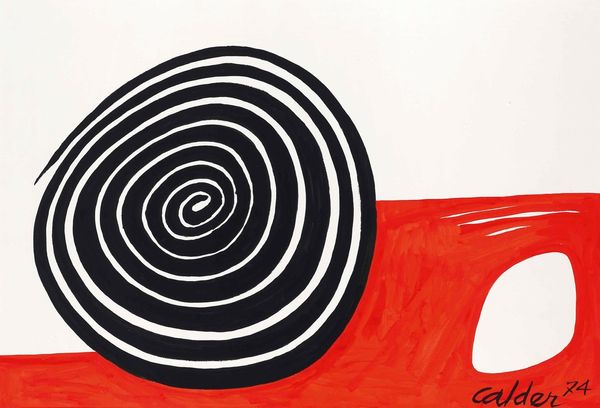
acrylic-paint
#
pop art-esque
#
caricature
#
pop art
#
acrylic-paint
#
abstract
#
geometric
#
pop art-influence
#
pop-art
#
modernism
Copyright: Modern Artists: Artvee
Curator: What grabs me immediately about Alexander Calder's 1967 piece, "Triple Yolk," done with acrylic paint, is its surprising playfulness. It feels almost… culinary, in an abstract, somewhat surreal way. Editor: "Culinary" is interesting. My initial reaction is that it’s an economical, and carefully planned study of balance, weight, and the materiality of commercial paint—what it can *do*. Curator: Balance, yes, I see it, that dance between the shapes, the reds popping against the stark black. The… eggs, maybe? They inject a little domestic quirk, like finding an unexpected treasure in your morning breakfast. The spiral especially, doesn't it evoke that gloopy egg white being poured? Editor: It's efficient, though, isn't it? These are the basic geometries made possible with commercially available brushes and pigments, achieving a sense of organic life from a controlled palette. It suggests the factory line’s power to also, quite literally, feed us. Curator: Oh, but there's a joy there, a lightness that defies any strict reading of mass production. See the small imperfections of color density? To me they are human, intimate details, not machine made. It is, after all, a triple yolk! Who finds one of those? Editor: Yet think about it; each shape has been carefully cut from negative space to act as form: an efficient system for painting with industrial applications. Calder’s borrowing from commercial, reproducible shapes here creates a subtle tension. Curator: Tension... like a tightrope walker made of scrambled eggs! That tightrope walker manages to amuse with color choices—especially in '67 when anything went—in an odd time when fine art increasingly questioned if could even exist? I appreciate the joy it brought. Editor: I see that Calder appropriates everyday materials, bringing the industrial into high art and exposing labor in both systems. He has made us ponder both creation and manufacturing—the mobile is now still. Curator: Still and thought-provoking! It reminds me we should appreciate those small things that we get and should ponder with, you know? An extra yolk or unexpected forms within something commonplace. Editor: I would agree, looking deeper it pushes one to meditate on a materialist investigation of creation: artistic, agricultural, even, yes, of the happy accidents!
Comments
No comments
Be the first to comment and join the conversation on the ultimate creative platform.
